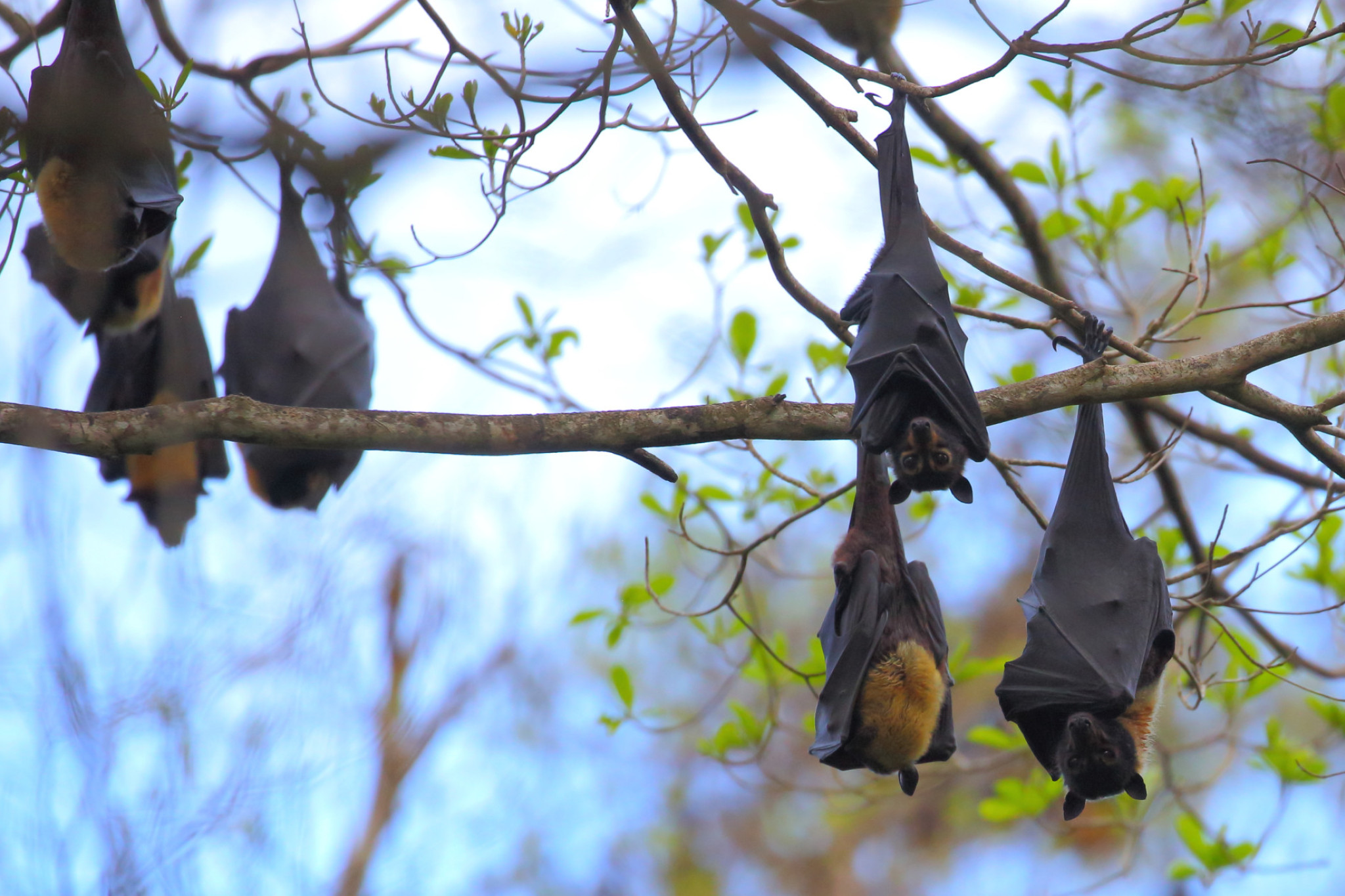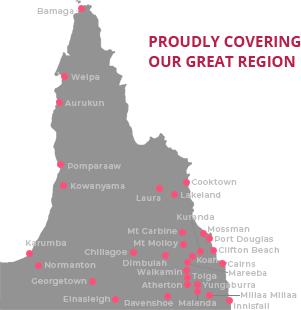Community & Business
7 April, 2025
300 flying fox pups orphaned by tick influx
THIS year’s paralysis tick season has taken a devastating toll on endangered Spectacled Flying-foxes, leaving more than 300 pups orphaned on the Tablelands.

Tolga Bat Hospital director Jenny Mclean said tick paralysis affected Spectacled Flying-foxes every year between October and December, but this season had been particularly severe.
“The worst-hit area was along Peterson Creek in Yungaburra, where more than 560 pups and 500 adults were found dead or in need of rescue,” she said.
“Unfortunately, tick season coincides with birthing season, but we can’t detect bats affected by tick paralysis until they fall from trees. Most cannot be treated and need to be euthanised.
“While many Australian wildlife species have long developed immunity to tick paralysis, it appears to have only started affecting flying-foxes in the past 40 years. It’s an agonising death for them.”
For nearly 30 years, Tolga Bat Hospital has been rescuing paralysed bats in Spectacled Flying-fox camps and tracking birth abnormalities. One of the key factors influencing tick paralysis rates is the prevalence of wild tobacco, an invasive weed.
To help address this issue, a new project led by Terrain NRM to support Spectacled Flying-fox recovery, is mapping wild tobacco on the southern Atherton Tablelands to guide weed control efforts.
The project also includes funding for Tolga Bat Hospital to improve data collection on tick-related fatalities. The four-year project is funded by the Australian Government Natural Heritage Trust and delivered by Terrain NRM, a member of the Commonwealth Regional Delivery Partners panel.
Project leader Dr Andrew Dennis said Spectacled Flying-foxes primarily foraged on native fruit and nectar, but they are also drawn to fruiting wild tobacco bushes, which host paralysis ticks.
“Wild tobacco is not only a threat to flying foxes – it’s also toxic to humans and livestock,” Dr Dennis said.
“This invasive weed thrives in disturbed or cleared areas, including roadsides. It impacts agriculture – particularly grazing – due to its toxicity to cattle, and it attracts Spectacled Flying-foxes towards farms to forage on the weed’s fruits.”
Terrain NRM is delivering several initiatives aimed at aiding the recovery of the endangered Spectacled Flying-fox.
“These flying-foxes play a crucial ecological role as long-distance pollinators and seed dispersers” Dr Dennis said.
“Their population has been severely impacted by several cyclones and an extreme heatwave event in the last decade.
“Climate change remains the biggest threat to the Spectacled Flying-fox, but to support population recovery after major heat waves, we need to address as many sources of mortality as possible. That includes tackling tick paralysis, habitat degradation, and threats like barbed wire fences.”


